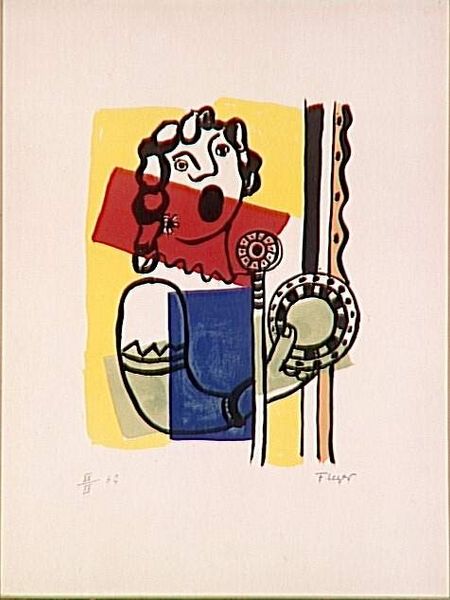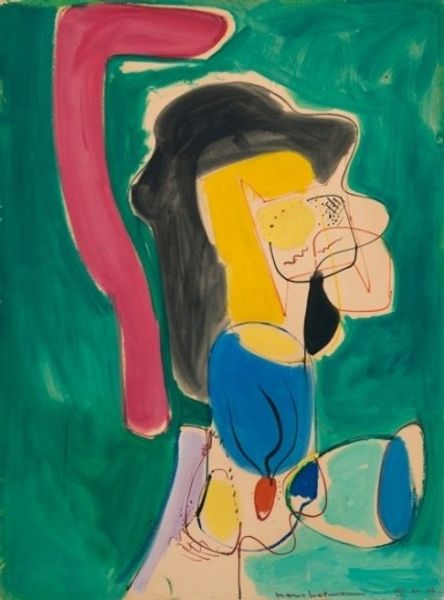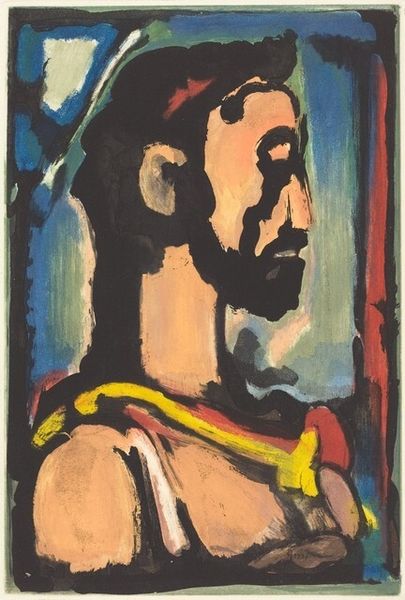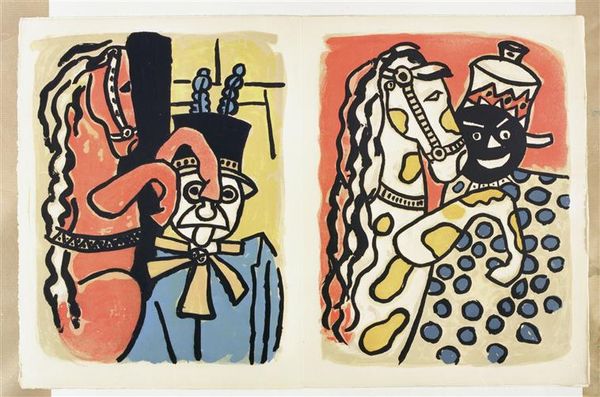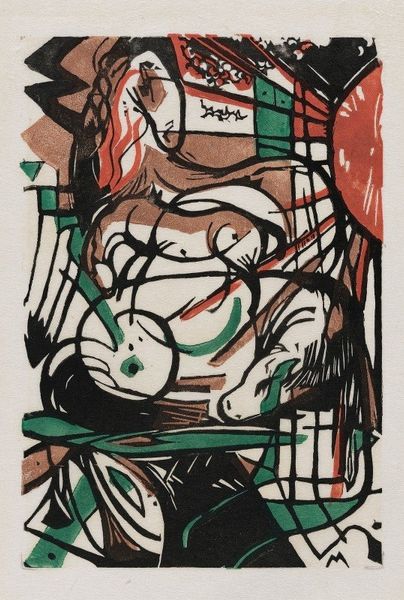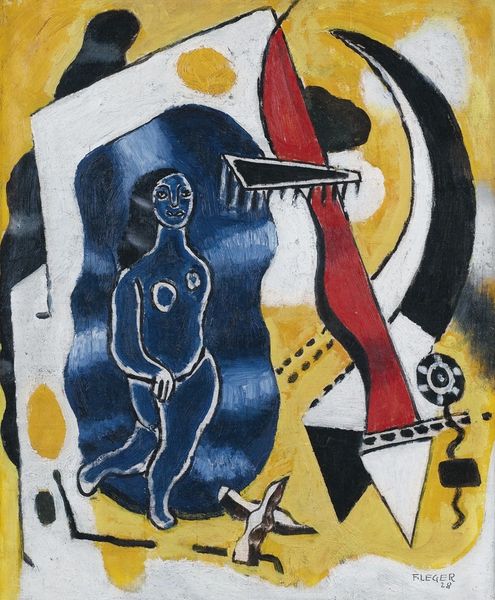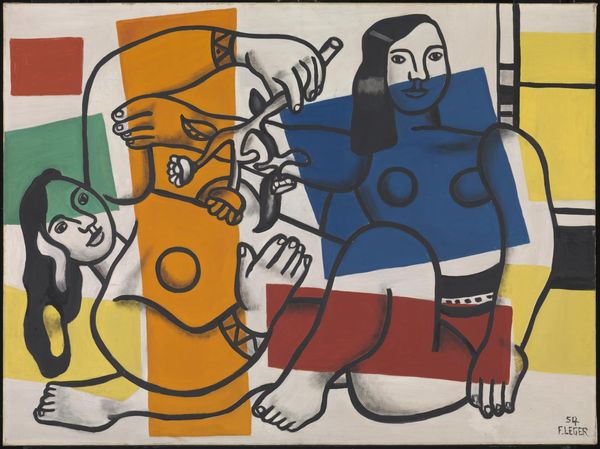
painting
#
portrait
#
cubism
#
painting
#
caricature
#
figuration
#
modernism
Dimensions: 32 x 26.3 cm
Copyright: Fernand Leger,Fair Use
Curator: Welcome! We are standing before Fernand Léger’s "Singer at the Microphone" painted in 1955, a vibrant example of his figuration work. Editor: Well, the first thing that strikes me is how raw the materials feel. You can really see the texture of the paint and the artist’s hand in these bold strokes. There’s an almost mechanical rhythm to it. Curator: Yes, and let's consider the singer herself, rendered in a flattened, almost cartoonish style. The disembodied head, the graphic quality, almost an emblem, evokes broader commentary about female performativity and the demands of celebrity culture at mid-century. What expectations were placed upon female singers? Editor: That’s interesting. I’m looking at the red plane slashing across the singer’s neck—is it violence or amplification? And consider the visible layering. It speaks to a constructed image, reflecting both Léger’s process and the subject’s fabricated persona. Curator: Exactly! Layering suggests the performative construction of identity, especially within the music industry where appearances are strategically manufactured. Do we see a critique of these constructed images of women being sold? Editor: Potentially, but it could also just be how things were made at that time. I think it's important not to ignore that this was created in France shortly after the devastation of the second world war, a time when the ideas about machinery and industrial methods still shaped the art production itself. It gives the portrait an intriguing human-machine aesthetic. Curator: The tension between the personal and mechanical really makes us question the human experience in an increasingly technological world. Do you think the bold colours—the primaries, black and white—are meant to express emotion or mechanization? Editor: It's the combination. Emotion through standardization. Those colours became cheap to make en masse, available after the war in particular to ordinary commercial industries, from home appliances to magazine advertising, so what is this portrait saying by borrowing these colours, by mass producing a singular art image. It puts a certain financial and production strain on what could easily have just remained one person singing, alone in a club or concert hall. Curator: I agree, that standardization could have implications about culture, society, or mass politics that we might otherwise have missed in a conventional reading of Léger. Editor: Considering how he’s put it all together gives me a sense of the world taking a bold leap into its post-war economy. And this single work of art does a lot to visualize that, it’s just, brilliant! Curator: Well said.
Comments
No comments
Be the first to comment and join the conversation on the ultimate creative platform.

